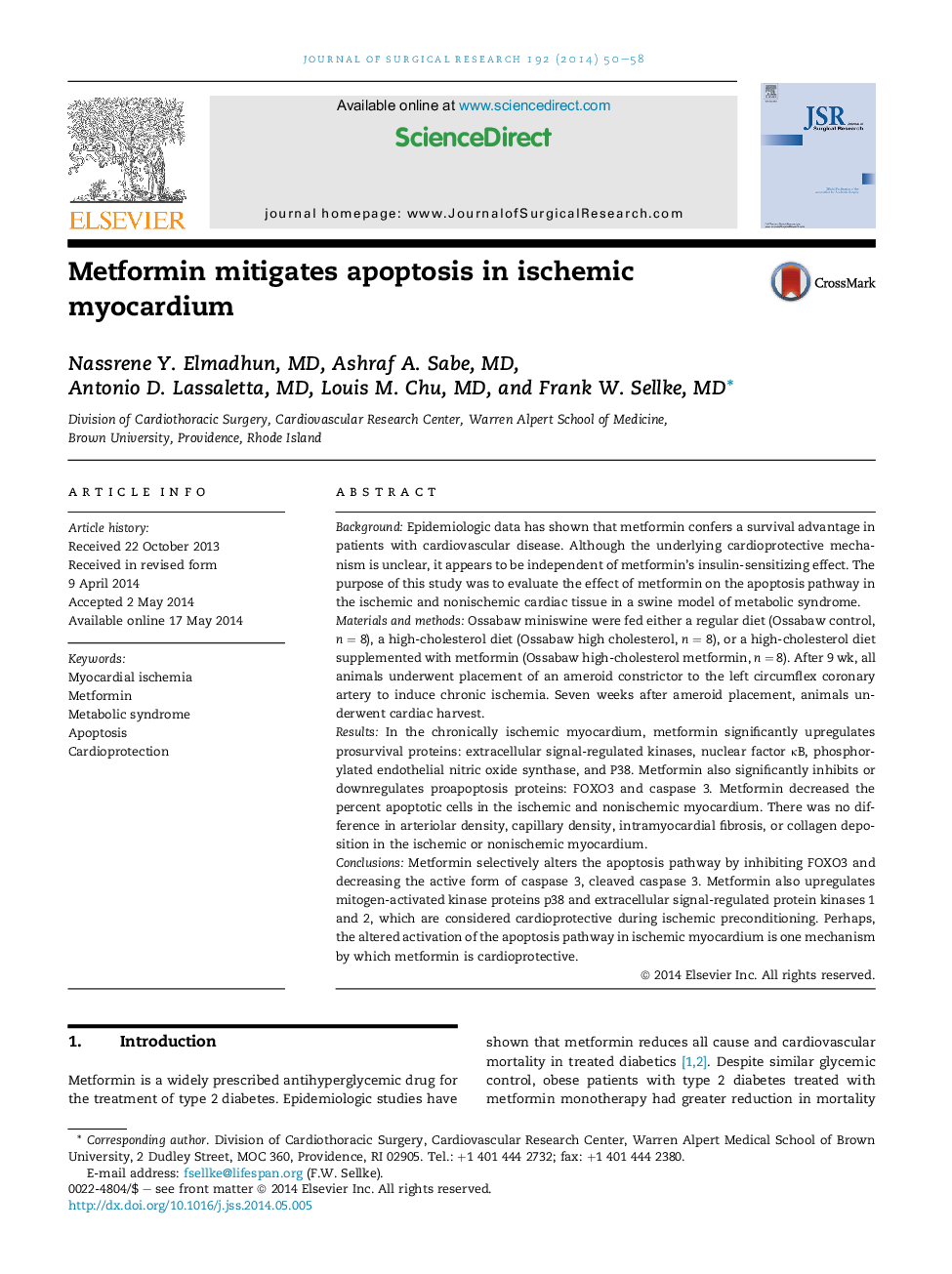| Article ID | Journal | Published Year | Pages | File Type |
|---|---|---|---|---|
| 4300063 | Journal of Surgical Research | 2014 | 9 Pages |
BackgroundEpidemiologic data has shown that metformin confers a survival advantage in patients with cardiovascular disease. Although the underlying cardioprotective mechanism is unclear, it appears to be independent of metformin's insulin-sensitizing effect. The purpose of this study was to evaluate the effect of metformin on the apoptosis pathway in the ischemic and nonischemic cardiac tissue in a swine model of metabolic syndrome.Materials and methodsOssabaw miniswine were fed either a regular diet (Ossabaw control, n = 8), a high-cholesterol diet (Ossabaw high cholesterol, n = 8), or a high-cholesterol diet supplemented with metformin (Ossabaw high-cholesterol metformin, n = 8). After 9 wk, all animals underwent placement of an ameroid constrictor to the left circumflex coronary artery to induce chronic ischemia. Seven weeks after ameroid placement, animals underwent cardiac harvest.ResultsIn the chronically ischemic myocardium, metformin significantly upregulates prosurvival proteins: extracellular signal-regulated kinases, nuclear factor κB, phosphorylated endothelial nitric oxide synthase, and P38. Metformin also significantly inhibits or downregulates proapoptosis proteins: FOXO3 and caspase 3. Metformin decreased the percent apoptotic cells in the ischemic and nonischemic myocardium. There was no difference in arteriolar density, capillary density, intramyocardial fibrosis, or collagen deposition in the ischemic or nonischemic myocardium.ConclusionsMetformin selectively alters the apoptosis pathway by inhibiting FOXO3 and decreasing the active form of caspase 3, cleaved caspase 3. Metformin also upregulates mitogen-activated kinase proteins p38 and extracellular signal-regulated protein kinases 1 and 2, which are considered cardioprotective during ischemic preconditioning. Perhaps, the altered activation of the apoptosis pathway in ischemic myocardium is one mechanism by which metformin is cardioprotective.
